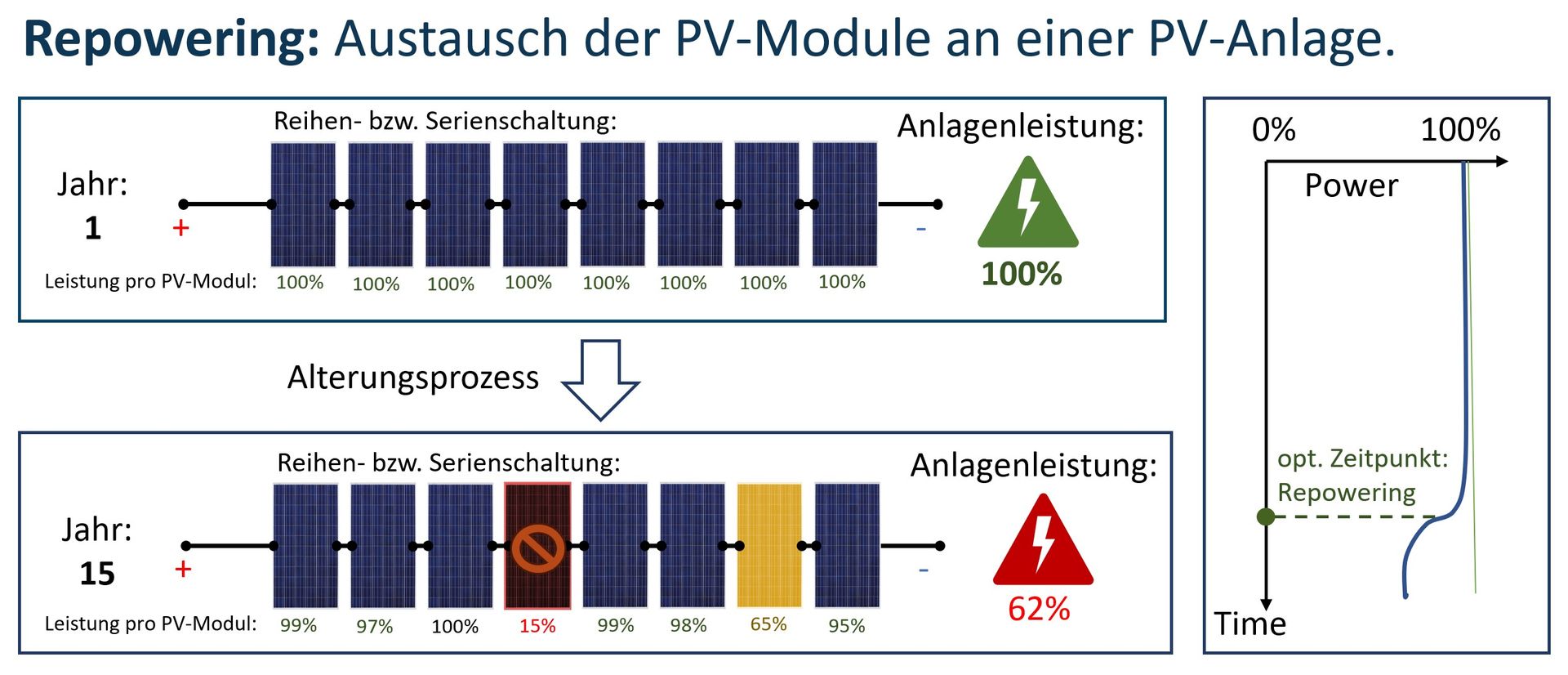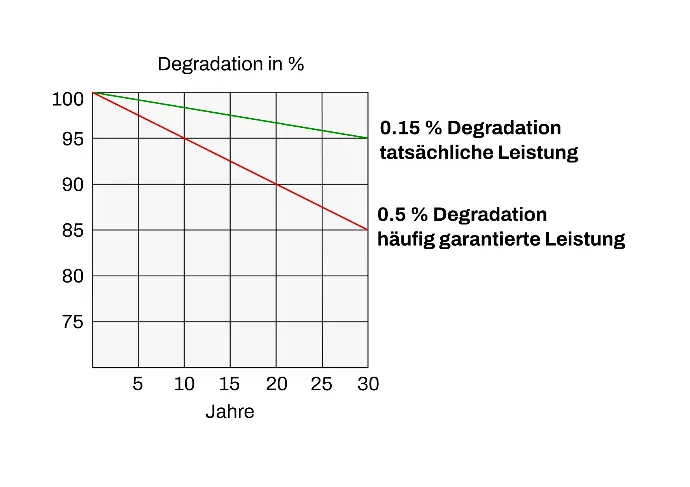Repowering
Due to the rapid development of the power yield per area, it can be interesting from an economic point of view to replace solar modules after 15 to 25 years at the respective location, even though a large proportion of the solar modules (up to 70%) function technically flawlessly. This is particularly the case where space is limited in conjunction with the strategy of maximum power yield.
However, these modules can be used economically and ecologically in an alternative location under different conditions. Scientific studies show that the perfect time for so-called "repowering", i.e. the replacement of PV modules, varies greatly and is 15-21 years for the systems examined.

Reasons for repowering
One of the relevant factors for repowering is if the system output falls below a certain threshold value. Reasons for this include individual defective modules, defective plug connections or defective MPP trackers. However, this does not mean that all solar modules have to be replaced.
The majority of all solar modules in a solar system are connected in series to form a string. If a solar module or a plug connection of a string is damaged, for example by hail, the internal resistance in the affected string increases. As a result, the remaining modules in the string are no longer operated at their optimum operating point, which greatly reduces the power yield of the string.

Consequences of repowerings
As a system operator, you have a choice of two options if the system performance is unsatisfactory. In the first option, the reason for the power loss is determined at great expense and effort. If defective modules are identified as the cause, you are confronted with the problem that the majority of solar modules that were installed a long time ago are no longer available on the market, making it difficult to procure spare parts.
It is therefore usually easier and also more economical to replace the entire solar modules. However, the majority of used, dismantled solar modules are still fully functional.
This means that solar modules are often replaced well before they reach their technical service life of 30 to 40 years. The question arises as to how high the output of dismantled solar modules will still be after two decades of use.

Lifetime of solar modules
A study by the renowned Fraunhofer ISE in Germany provides a clear answer to this: "Wafer-based solar modules age so slowly that it is a challenge for scientists to even detect power losses."
The study, carried out on 44 larger, quality-tested rooftop systems in Germany, showed an average annual degradation of the nominal output of approx. 0.15 %. This means that, on average, these modules have only lost 3 % of their nominal output in 20 years. This means that a solar module with an initial output of 300 Wp can still produce 291 Wp after 20 years of use.
If all this information is combined, it becomes clear that an efficient and cost-effective process will be needed in the coming years to recycle used solar modules and thus enable an ecologically, economically and circularly sensible second life cycle for used solar modules.
We are currently working on developing and manufacturing a prototype of the upcycling system in several development stages. If you have any suggestions or questions about the upcycling system, please do not hesitate to contact us.